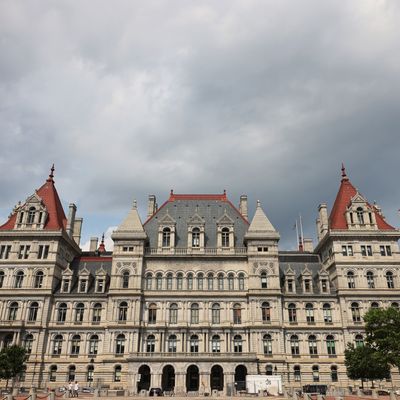
For the second time in two years, New Yorkers have a new congressional map.
On Wednesday, the State Assembly voted 115 to 33 and the State Senate 45 to 17 in favor of the map drawn by lawmakers after rejecting the map drawn by the independent redistricting commission two days prior.
Although legislators only just released the new lines late Monday, they were able to circumvent the traditional three-day waiting period after Governor Kathy Hochul signed what’s known as a message of necessity in order to speed up the process. Hours later, Hochul officially signed the map into law.
With the New York Republican Party stating that it won’t challenge the new lines, the map’s passage likely marks the official end to the state’s drawn-out redistricting saga, which began during the 2022 midterms. Despite the looming 2024 election cycle, the majority Democratic legislature took a more moderate approach to the new map over a more ambitious gerrymander that could have helped to tip the scales in its party’s favor.
Lawmakers made very few changes to the map put forth by the redistricting commission. Initially, the Hudson Valley districts of Republican congressman Marc Molinaro and Democratic congressman Pat Ryan were to be strengthened, a move that would have greatly benefited both incumbents as they seek reelection. However, the legislature opted against those moves, per the New York Times. Lawmakers also overturned a plan to divide Orange County between the two districts. Instead, the county will remain fully in Ryan’s district. Politico reports that through an exchange of several Ulster County towns, Ryan’s district will grow slightly more Democratic, while Molinaro’s district will stay largely the same in terms of competitiveness.
In New York City, Congressman Jamaal Bowman will now represent Co-op City, a cooperative housing development in the Bronx, which was added back to his district after he lost the area during 2022 redistricting. In exchange, Bowman will lose the neighborhood of Wakefield. The map doesn’t make any changes to the portions of the district that lie in Westchester County, a move that might benefit Bowman’s primary challenger, George Latimer, the sitting county executive.
Congressman Brandon Williams’s Syracuse-based district will now include the cities of Auburn and Cortland as first proposed by the commission, making the region he represents much bluer than before.
Several Republicans found that their districts were left largely untouched. Congressman Mike Lawler, whose seat is considered a top target for Democrats, saw no major changes to his district. Congresswoman Nicole Malliotakis’s Staten Island district, which was controversially connected with more liberal Brooklyn neighborhoods under the legislature’s 2022 map attempt, was also left alone.
In 2022, the bipartisan commission was tasked with drawing new maps following the 2020 Census but failed to come to an agreement on a final set. State lawmakers then stepped in and drew their own House map, producing new lines that many saw as overly favorable to Democratic Party candidates. Republicans immediately filed a court challenge, sparking a long series of rulings and appeals that led all the way to the Court of Appeals, the state’s highest court. The court deemed the lawmakers’ map overly partisan and appointed an independent special master to draw a new and, ultimately, highly contested one.
Lawmakers got a second attempt at drawing a new map ahead of the 2024 election after the Court of Appeals ruled in favor of a Democratic Party–backed challenge that argued that the commission didn’t complete its constitutional duty when it failed to put forward a set of maps.






























